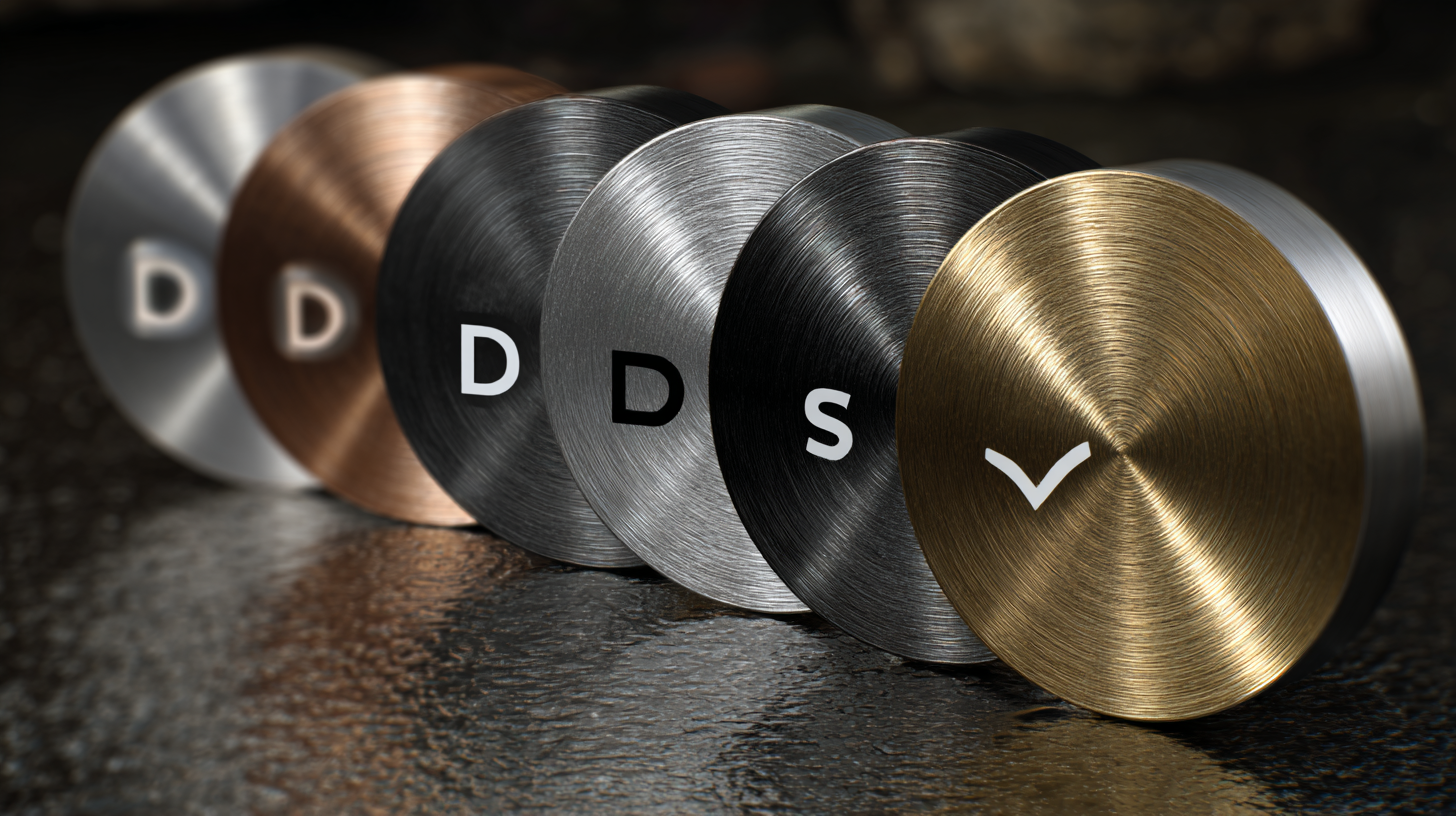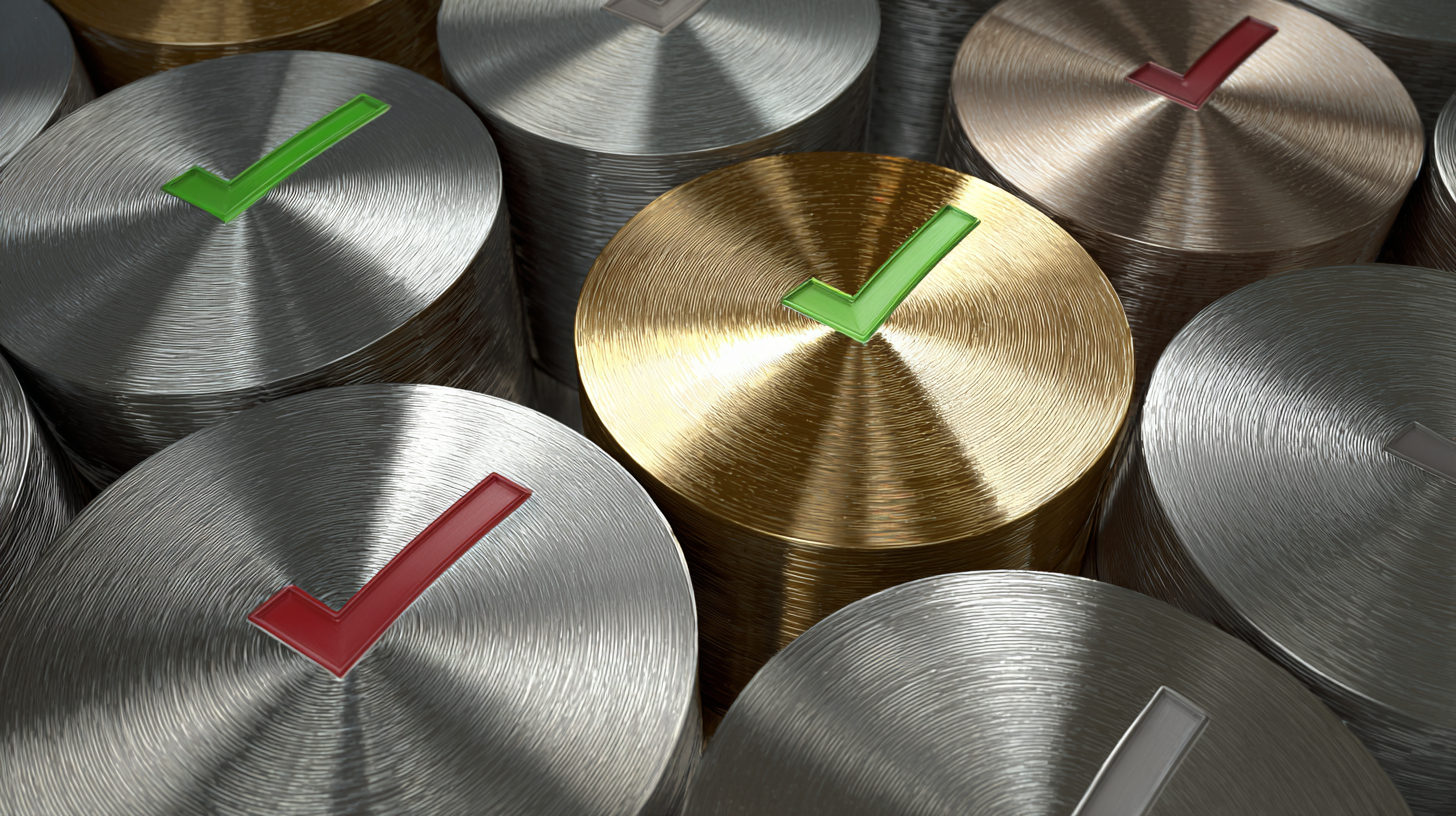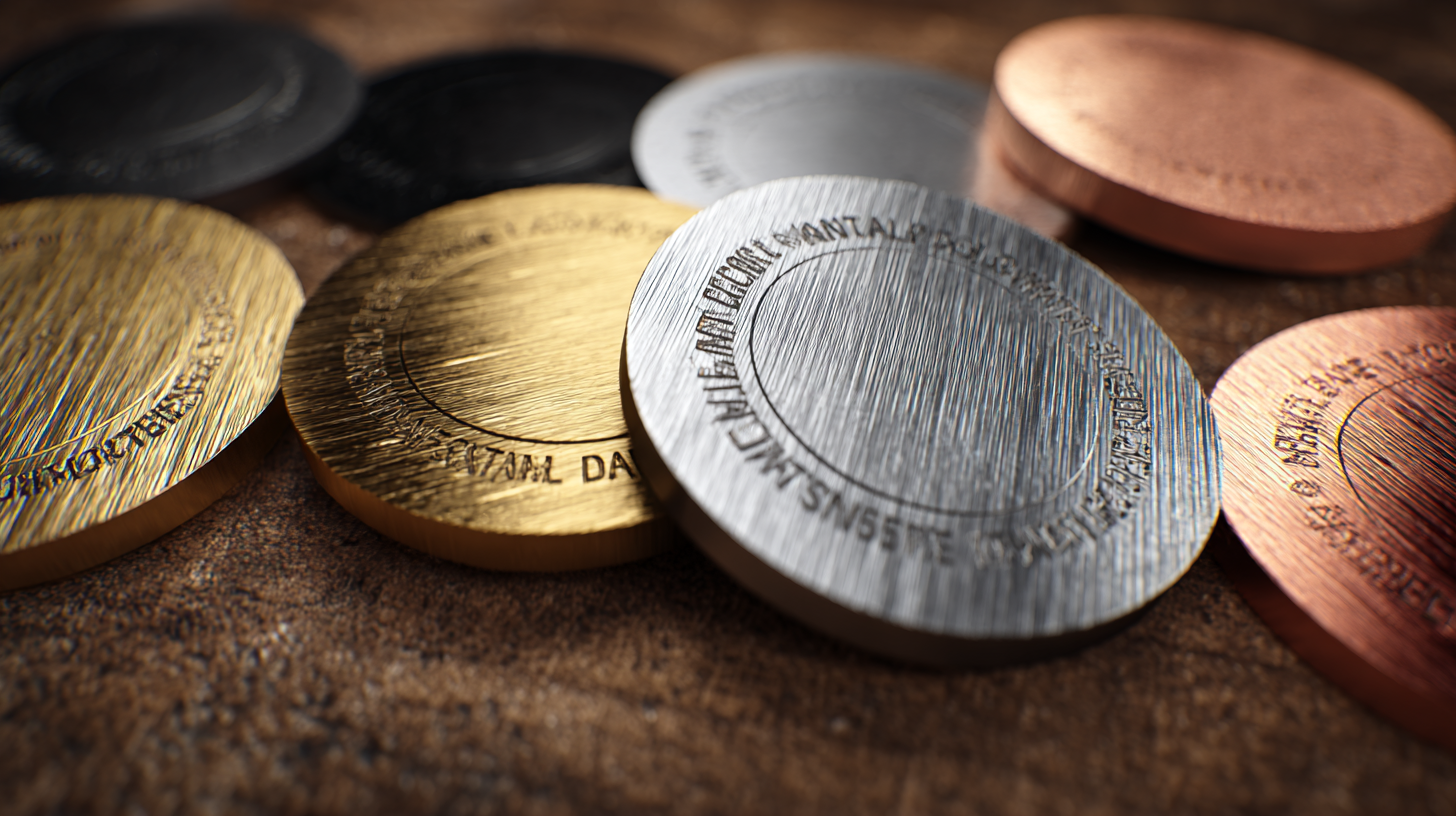In the realm of manufacturing and fabrication, the selection of the right materials is crucial for the success and longevity of any project. Among these materials, Round Metal Discs have emerged as a fundamental component in various applications ranging from automotive to industrial machinery. According to a recent industry report by Smithers Pira, the global demand for metal discs is expected to rise by over 5% annually, reflecting an increased reliance on precision-engineered components. This surge underscores the importance of understanding the diverse options available in the market, from various metal types to thickness and finish. Selecting the best Round Metal Disc can significantly influence the outcome of your project, ensuring durability, performance, and cost-effectiveness. This checklist aims to guide you through the essential factors to consider in making an informed decision, ultimately enhancing the quality and efficiency of your work.

When selecting round metal discs for industrial applications, several critical factors should guide your decision-making process. First and foremost, consider the material composition of the discs. Different metals, such as steel, aluminum, or brass, offer varying degrees of strength, weight, and corrosion resistance—key attributes that align with specific project requirements. For instance, if your application involves exposure to moisture or chemicals, opt for rust-resistant materials that can withstand such conditions without compromising their integrity.
Another important factor is the size and thickness of the metal discs. The dimensions must be suited to the intended application, whether it's for fabricating components, manufacturing tools, or structural support. Pay attention to the precise measurements, as even slight deviations can affect performance. Additionally, think about the manufacturing standards and tolerances; selecting discs that meet industry specifications ensures they will perform reliably under the stresses of industrial use. Finally, evaluate potential suppliers for quality assurance and consistency, as reliable sourcing can significantly impact the overall success of your project.

When selecting round metal discs for your project, the choice of material plays a crucial role in determining the performance and durability of the final product. Two of the most common materials used are steel and aluminum, each possessing distinct properties that can significantly affect their suitability for various applications. According to a report by the American Metal Market, steel, particularly stainless steel, offers superior strength, with an ultimate tensile strength around 520 MPa compared to aluminum's typical range of 200-300 MPa. This makes steel an ideal choice for applications requiring high load-bearing capabilities or resistance to deformation under stress.

On the other hand, aluminum's lightweight nature—approximately one-third the weight of steel—coupled with its excellent corrosion resistance, positions it favorably for industries like aerospace and automotive. The Aluminum Association points out that aluminum can also be anodized or coated for enhanced protection, making it versatile for outdoor applications. However, when deciding between the two, it is essential to consider factors such as environmental conditions, required mechanical properties, and cost efficiency. Ultimately, understanding these materials' characteristics will help ensure you select the best round metal discs tailored to your specific project needs.
When evaluating the cost-effectiveness of round metal discs for your project, it's crucial to consider not only the initial purchase price but also the long-term value and usability. According to a report by the Metalworking Alliance, the price of raw materials for metal discs fluctuated by up to 15% over the past year, largely driven by changes in global supply chains and demand. Therefore, sourcing your discs from reputable suppliers who offer transparent pricing structures can save significant costs over time.
In addition to price, examining the durability and performance attributes of the metal discs will impact overall cost-effectiveness. A study by the International Journal of Metal Components highlighted that high-quality stainless steel discs maintained structural integrity under stress for 40% longer than lower-grade alternatives. This durability translates into reduced replacement costs and less downtime for projects, making it essential to balance upfront costs with long-term benefits. By carefully analyzing both price and performance, you can select round metal discs that not only fit your budget but also enhance the overall efficiency of your project.
| Material | Diameter (inches) | Thickness (inches) | Price per Disc ($) | Quantity | Total Cost ($) |
|---|---|---|---|---|---|
| Aluminum | 6 | 0.25 | 2.50 | 100 | 250.00 |
| Stainless Steel | 8 | 0.5 | 5.00 | 50 | 250.00 |
| Carbon Steel | 10 | 0.75 | 3.50 | 75 | 262.50 |
| Brass | 5 | 0.3 | 4.00 | 200 | 800.00 |
| Copper | 7 | 0.4 | 6.00 | 30 | 180.00 |
When selecting discs for your project, considering alternative materials can lead to both innovative solutions and environmentally friendly choices. While traditional metal discs are popular for their durability, non-metal options like ceramics, composites, and biodegradable materials are gaining traction. Recent studies indicate that non-metal discs can provide similar performance benefits, such as heat resistance and low wear, while also being lightweight and reducing carbon footprints in manufacturing.
Tips for choosing non-metal discs include assessing the specific requirements of your project, such as load capacity and environmental conditions. For instance, ceramic discs are known for their non-toxic properties, making them suitable for applications where human safety is a priority. Another option is exploring engineered plastics, which can offer excellent resistance to corrosion and abrasion, prolonging the lifecycle of the product.
Incorporating non-metal discs can significantly contribute to sustainability efforts. Reports show that using alternative materials in manufacturing can reduce resource consumption and waste by up to 30%. As industries shift towards greener practices, it's essential to stay informed about the latest developments and testing results in non-metal disc options, ensuring your project aligns with ecological standards while maintaining high performance.
In recent years, the metal disc production industry has seen a significant shift towards sustainability. With increasing awareness of environmental issues, manufacturers are exploring eco-friendly practices in their production processes. This trend not only helps reduce the carbon footprint but also appeals to environmentally-conscious consumers who prefer sustainable products. Implementing recycling initiatives, utilizing renewable energy, and sourcing raw materials responsibly are becoming standard practices among leading suppliers.
When selecting round metal discs, it's essential to consider the sustainability of the materials used. Look for manufacturers that prioritize recycled metals, as this not only conserves resources but also minimizes waste. Additionally, inquire about the production methods to ensure they adhere to environmentally-friendly practices.
Another tip is to evaluate the supplier's commitment to sustainability through their certifications or partnerships with ecological organizations. Choosing suppliers that align with sustainable values not only enhances your project’s environmental footprint but also adds credibility to your brand in the eyes of consumers who prioritize green practices. Being proactive in seeking out sustainable options can significantly impact both project success and environmental wellness.
